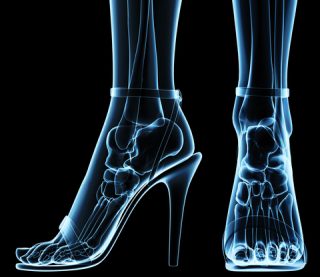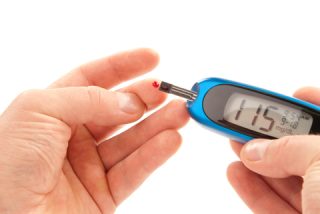
The average person walks 9000 steps (4½ miles) per day. This may seem a lot but compare it to the amount taken by those in continual standing/walking professions and it pales in comparison! The feet of those in an active job, such as cabin crew, will be put to greater use than those of us in less physically demanding or more desk-based roles.
The role of the cabin crew member, or flight attendant, is one such example, thus it is not surprising that cabin crew attend our clinic on a daily basis, seeking help for a variety of issues affecting their lower back, hips, legs, knees & feet.
Common Cabin Crew Foot Problems
• Pain in the arch, heel or ball of the foot/feet
• Visible changes in the shape and size of the foot/feet
• Clawing of the toes
• Lesions – hard skin, tissue swelling, skin peeling, red spots.
• Corns, Callus, Verruca
• Nail concerns – ingrowing/fungal/ trauma.
• Muscle pain.
• Lower back or knee pain
• Bunions
Foot Tips for Cabin Crew
• Maintain skin hydration by applying a good (urea-based) foot moisturizing cream once daily. The skin is a protective barrier preventing the entry of bacterial, fungal or viral infections, neglect it and the barrier will break down. Skin is at higher risk of drying out on long-haul flights.
• Remove toenail varnish after 48 hours – covering the nails for any longer than this can weaken the nail, and increases the risk of fungal infection.
• Avoid wearing footwear outside of work that are not supportive – flip flops, ballet pumps and stilettos can make underlying problems worse. Shoes that don’t support the feet will lead to skin, tendon, bone and even circulation problems.
• Alternate your shoes on a daily basis, as not doing so can increase the risk of developing fungal skin infections (e.g. Athletes foot).
• Pack your sports shoes with you on your layovers to wear around the city
How can a Podiatrist help cabin crew?
The Podiatrists at Dubai Podiatry Centre have been working with major local airlines for many years now and are experts in the typical ailments of cabin crew and the rigorous demands on your feet in your profession. Our aim is to keep you flying happily, and to work within grooming/uniform footwear guidelines, whilst keeping you fit for duty. Your feet are critical to your work, and we have developed specific treatments for cabin crew based on our in-depth understanding of the nature of your work and duties, uniform and roster and we always work to keep you and your Airline GP fully informed.
We will always carry out a bio-mechanical assessment when we first see you as part of our thorough examination process, to get to the root cause of any problem. For example, corns and callous can be a sign of extra pressure on an area of the foot due to a misalignment and the body trying to protect itself. Commonly this is either the ankles rolling on or out, collapsed arches or bunions.
How do the Podiatrists at Dubai Podiatry Centre work with cabin crew?
• Stretching of cabin shoes and/or high heel work shoes to give more room in the toe box
• Fitting of comfort cushioning liners to work shows, particularly when no biomechanical anomaly is present, to provide comfort
• Prescription of fully custom made orthotics to be worn within your cabin shoes at work, specifically designed and modified by us for the uniform cabin shoe. We are the only clinic in the Middle east to make custom made orthotics in our in-house lab, as opposed to generic or customized orthotics which are not made specifically for your feet.
• Advice and professional treatment of skin and nail problems such as verrucas, corns, callous and ingrowing toenails
• Gentle silicone based protective gel toe ˜tubing™ worn discreetly within your cabin shoes to protect your toes from friction and resulting corns and bursas.
• Routine regular chiropody care to maintain your foot health including corn and callous removal, fungal and ingrowing toenail management.
At Dubai Podiatry Centre we specialize in correcting underlying bio-mechanical discrepancies with the use of custom made corrective orthotics and are the only clinic in the region to do so. Custom prescription orthotics will realign specific joints within the feet, creating greater stability and improved function throughout the lower limbs. With the constraints of work footwear such as the cabin shoe in mind we have developed a specialized custom orthotic.
If you are concerned at all about your feet, legs or lower back, ask your Airline GP to refer you to Dubai Podiatry Centre. You can also contact us directly on +971 4 3435390 | WhatsApp – +971 50 3553024 for further information on how we can help keep your feet fit for flying!
طاقم المقصورة والأقدام الطائرة!
يمشي الشخص العادي ٩٠٠٠ خطوة (٤ أميال ونصف) يوميًا. قد يبدو هذا كثيرًا ولكن مقارنته بالمبلغ الذي يأخذه أولئك الذين يعملون في مهن الوقوف/المشي المستمر وهو يتضاءل بالمقارنة! سيتم استخدام أقدام أولئك الذين يعملون في وظيفة نشطة، مثل طاقم الطائرة، بشكل أكبر من أولئك الذين يعملون في أدوار أقل تطلبًا بدنيًا أو أكثر عملاً في المكاتب.
يعد دور أحد أفراد طاقم الطائرة، أو مضيفة الطيران، أحد الأمثلة على ذلك، وبالتالي ليس من المستغرب أن يحضر طاقم الطائرة إلى عيادتنا يوميًا، لطلب المساعدة في مجموعة متنوعة من المشكلات التي تؤثر على أسفل الظهر والوركين والساقين والركبتين. & قدم.
مشاكل قدم طاقم الطائرة الشائعة
• ألم في قوس القدم أو الكعب أو كرة القدم/القدم
• تغيرات واضحة في شكل وحجم القدم/القدمين
• خدش أصابع القدم
• الآفات – الجلد الصلب، تورم الأنسجة، تقشير الجلد، البقع الحمراء.
• مسامير القدم، الكالس، الثؤلول
• مخاوف الأظافر – النمو الداخلي/الفطريات/الصدمات.
• ألم عضلي.
• ألم في أسفل الظهر أو الركبة
• الأورام
نصائح القدم لطاقم الطائرة
• الحفاظ على ترطيب الجلد عن طريق وضع كريم جيد لترطيب القدمين (يحتوي على اليوريا) مرة واحدة يومياً. الجلد عبارة عن حاجز وقائي يمنع دخول العدوى البكتيرية أو الفطرية أو الفيروسية، أهمله وسينهار الحاجز. يكون الجلد أكثر عرضة للجفاف أثناء الرحلات الجوية الطويلة.
• قم بإزالة طلاء أظافر القدم بعد 48 ساعة – فتغطية الأظافر لفترة أطول من ذلك يمكن أن يضعف الظفر ويزيد من خطر العدوى الفطرية.
• تجنب ارتداء الأحذية غير الداعمة خارج العمل – فالشباشب وأحذية الباليه والأحذية ذات الكعب العالي يمكن أن تؤدي إلى تفاقم المشاكل الأساسية. الأحذية التي لا تدعم القدمين ستؤدي إلى مشاكل في الجلد والأوتار والعظام وحتى الدورة الدموية.
• قم بتبديل حذائك بشكل يومي، لأن عدم القيام بذلك قد يزيد من خطر الإصابة بالتهابات الجلد الفطرية (مثل قدم الرياضي).
• اصطحب حذائك الرياضي معك أثناء فترات توقفك لارتدائه في جميع أنحاء المدينة
كيف يمكن لطبيب الأقدام مساعدة طاقم الطائرة؟
يعمل أطباء الأقدام في مركز دبي لعلاج الأقدام مع شركات الطيران المحلية الكبرى منذ سنوات عديدة وهم خبراء في الأمراض التقليدية لطاقم الطائرة والمتطلبات الصارمة لقدميك في مهنتك. هدفنا هو أن نجعلك تحلق بسعادة، وأن تعمل ضمن إرشادات العناية بالأحذية/الزي الرسمي، مع الحفاظ على لياقتك للواجب. تعتبر قدميك أمرًا بالغ الأهمية لعملك، وقد قمنا بتطوير علاجات محددة لطاقم الطائرة بناءً على فهمنا المتعمق لطبيعة عملك وواجباتك والزي الرسمي وقائمة الموظفين، ونعمل دائمًا على إبقائك أنت والطبيب العام الخاص بشركة الطيران على اطلاع تام.
سنقوم دائمًا بإجراء تقييم ميكانيكي حيوي عندما نراكم لأول مرة كجزء من عملية الفحص الشامل لدينا، للوصول إلى السبب الجذري لأي مشكلة. على سبيل المثال، يمكن أن تكون مسامير القدم والصلب علامة على وجود ضغط إضافي على منطقة من القدم بسبب اختلال المحاذاة ومحاولة الجسم حماية نفسه. عادةً ما يكون هذا إما تدحرج الكاحلين أو خروجهما، أو انهيار الأقواس أو الأورام.
كيف يعمل أطباء الأقدام في مركز دبي لعلاج الأقدام مع طاقم الطائرة؟
• تمديد أحذية المقصورة و/أو أحذية العمل ذات الكعب العالي لتوفير مساحة أكبر في منطقة أصابع القدم
• تركيب بطانات مريحة في عروض العمل، خاصة في حالة عدم وجود أي شذوذ في الميكانيكا الحيوية، لتوفير الراحة
• وصفة طبية لتقويم العظام حسب الطلب بالكامل ليتم ارتداؤها داخل أحذية المقصورة الخاصة بك في العمل، والتي تم تصميمها وتعديلها خصيصًا من قبلنا لتناسب حذاء المقصورة الموحد. نحن العيادة الوحيدة في الشرق الأوسط التي تصنع أجهزة تقويم العظام حسب الطلب في مختبرنا الداخلي، على عكس أجهزة تقويم العظام العامة أو المخصصة التي لا يتم تصنيعها خصيصًا لقدميك.
• تقديم المشورة والعلاج المهني لمشاكل الجلد والأظافر مثل الثآليل والذرة والأظافر القاسية والأظافر الناشبة
• هلام واقٍ لطيف على أصابع القدم مصنوع من السيليكون ˜tubing™ يتم ارتداؤه بشكل خفي داخل حذائك في المقصورة لحماية أصابع قدميك من الاحتكاك وما ينتج عنه من مسامير القدم والجراب.
• العناية الروتينية المنتظمة بتقويم العمود الفقري للحفاظ على صحة قدمك، بما في ذلك إزالة مسامير القدم والصلبة، وإدارة الفطريات والأظافر الناشبة.
في مركز دبي لطب الأرجل، نحن متخصصون في تصحيح التناقضات الميكانيكية الحيوية الأساسية باستخدام أجهزة تقويم العظام التصحيحية المصممة خصيصًا، كما أننا العيادة الوحيدة في المنطقة التي تقوم بذلك. ستعمل أجهزة تقويم العظام الموصوفة طبيًا على إعادة تنظيم مفاصل محددة داخل القدمين، مما يؤدي إلى مزيد من الاستقرار وتحسين الوظيفة في جميع أنحاء الأطراف السفلية. مع الأخذ في الاعتبار القيود المفروضة على أحذية العمل مثل حذاء المقصورة، قمنا بتطوير جهاز تقويم العظام المخصص.
إذا كنت قلقًا على الإطلاق بشأن قدميك أو ساقيك أو أسفل ظهرك، فاطلب من طبيبك العام التابع لشركة الطيران أن يحيلك إلى مركز دبي لعلاج الأرجل. يمكنك أيضًا الاتصال بنا مباشرة على الرقم ٠٤٣٤٣٥٣٩٠|
WhatsApp – 0503553024 لمزيد من المعلومات حول كيف يمكننا المساعدة في الحفاظ على قدميك صالحة للطيران!







